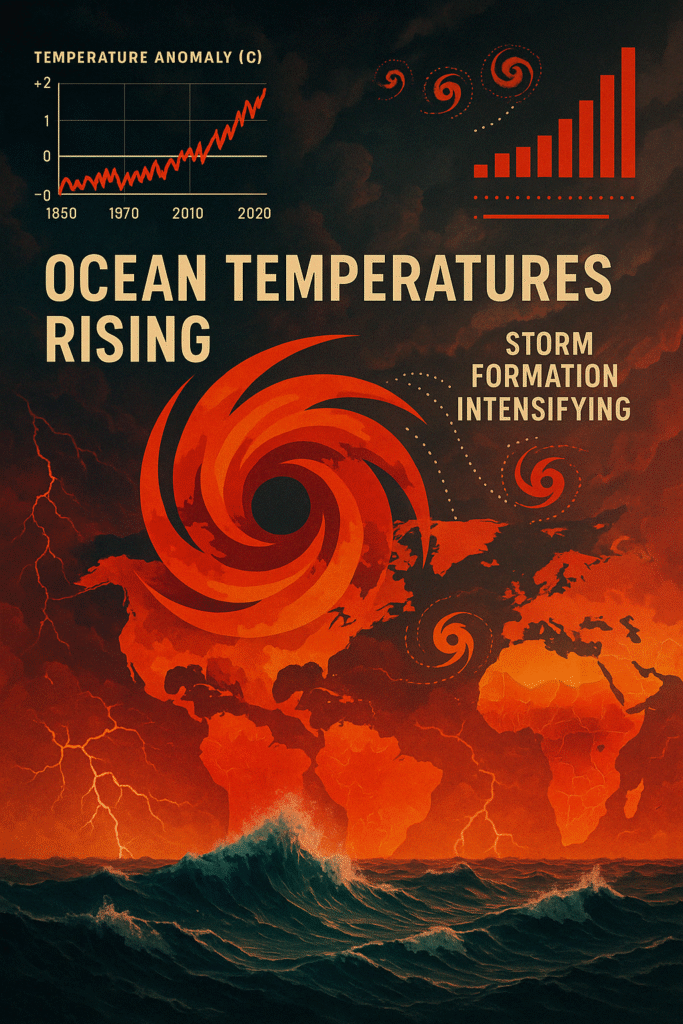By NatureWeatherHub
Primary Keywords: Storm Éowyn, Europe storm 2025, bomb cyclone Europe, climate change storms, Ireland storm damage, UK storm impacts
Secondary Keywords: storm resilience, infrastructure damage Europe, weather extremes Europe, European storm recovery, climate emergency
A Storm Named Éowyn
In late January 2025, an unusually fierce storm named Éowyn barreled across Northern and Western Europe, carving a destructive path from Ireland and the United Kingdom through parts of continental Europe. Labeled a “bomb cyclone” by meteorologists—due to its rapid intensification marked by a dramatic plunge in atmospheric pressure—Éowyn delivered a stark demonstration of nature’s capacity for swift devastation, further underscoring the region’s vulnerability in an era of intensifying climate extremes.
For residents from Galway to Glasgow, Éowyn represented more than a weather event. It was a blunt reminder of what climate scientists have long warned: our cities and towns are not adequately prepared for the future that climate change is rapidly shaping.

Fury and Force: A Record-Breaking Storm
As Storm Éowyn surged ashore, it broke longstanding meteorological records across the region. In Ireland, winds reached a staggering 183 km/h (114 mph) at Mace Head in County Galway, the highest gust recorded there since records began nearly 80 years ago. Across the Irish Sea, similar scenes unfolded in Scotland, Wales, and Northern England as hurricane-force gusts uprooted ancient trees, tore rooftops away, and shattered windows like paper.
What caught meteorologists off guard was the sheer speed and suddenness with which Éowyn intensified—a hallmark of bomb cyclones, characterized by their dramatic drops in central pressure. Typically reserved for oceanic storms, this explosive intensification amplified the storm’s destructive potential, catching many communities unprepared.

Human Lives Upended
The human toll of Storm Éowyn quickly became evident. Tragically, two young lives were among the confirmed fatalities. In County Donegal, Ireland, 20-year-old Kacper Dudek was killed when fierce winds toppled a massive tree onto his vehicle. In East Ayrshire, Scotland, a similar tragedy unfolded when a 19-year-old man lost his life under near-identical circumstances.
But the tragedy extended far beyond individual lives lost. Over one million homes and businesses across Ireland and the United Kingdom lost power, plunging residents into darkness and cold. Northern Ireland alone saw nearly 285,000 households without electricity, many for over a week, as damaged infrastructure delayed restoration efforts. For the elderly and vulnerable, such outages posed life-threatening risks, especially as heating systems failed amidst freezing temperatures.

A Region in Gridlock: Transportation Chaos
The scale of the storm’s impact was vividly illustrated by the widespread disruptions to transportation. Over 1,100 flights were cancelled, stranding tens of thousands of passengers. Airports like Dublin, Glasgow, and Manchester turned into chaotic scenes as frustrated travelers waited for updates amid the relentless roar of Éowyn.
Railway and ferry services were similarly paralyzed. In Scotland, Network Rail suspended all services across multiple routes as tracks became littered with fallen trees and debris. Ferries between Ireland and Britain, lifelines for commerce and travel, remained docked indefinitely. Across affected regions, schools, universities, and many businesses closed doors, prioritizing safety as authorities urged residents to stay indoors.

Economic Aftershocks: Counting the Cost
In the storm’s aftermath, the economic implications began to crystallize. Preliminary estimates placed the insured damage from Éowyn at nearly €1 billion across affected regions, though the total economic cost—including uninsured losses and long-term disruptions—could easily double or triple this initial estimate.
Businesses already strained by economic uncertainties faced an additional blow as prolonged power outages halted production, spoiled inventories, and disrupted supply chains. The destruction of infrastructure—roads, power lines, public buildings—will necessitate years of recovery, placing enormous financial burdens on local governments already struggling under constrained budgets.

The Hidden Damage: Communication and Connectivity
Perhaps one of the storm’s most overlooked impacts was on telecommunications networks, critical lifelines during emergencies. Mobile phone services experienced a dramatic slowdown, with data speeds dropping by as much as 78% across affected areas in Ireland, leaving emergency responders and families unable to communicate effectively.
As power outages crippled cell towers, residents accustomed to instant digital connections faced unsettling silence. This disruption underscored the fragility of modern infrastructure under extreme weather conditions, highlighting a critical gap in emergency preparedness.

Climate Change: Fueling the Storm
Experts agree that storms like Éowyn aren’t merely random acts of nature but signals from a climate undergoing rapid transformation. Climate scientist Dr. Emma Hawkins, speaking shortly after Éowyn’s devastation, explained, “What we’re witnessing aligns precisely with climate model predictions. Warmer ocean surfaces fuel storms, leading to more frequent and intense weather events.”
Indeed, Éowyn’s rapid intensification—a key factor in its destructive power—is a known consequence of warmer sea surfaces and disrupted jet streams associated with climate change. Meteorologists point to these rapidly intensifying storms as warnings of what is becoming increasingly common in our warming world.

Recovery and Resilience: A Path Forward
In the weeks following Éowyn, communities across Northern and Western Europe began the difficult process of recovery. Cleanup operations mobilized thousands of workers, from utility crews restoring power lines to local volunteers clearing debris from roads and properties.
Yet as the immediate recovery took shape, the longer-term question loomed large: How can societies better prepare for the inevitability of future storms of this magnitude?
Disaster management experts advocate for several critical steps:
- Strengthening infrastructure to withstand extreme winds and flooding
- Implementing early-warning systems capable of providing rapid alerts
- Enhancing emergency communication networks, including backup power systems
- Rethinking urban planning, emphasizing resilient designs that anticipate extreme weather
Governments and businesses alike are now tasked with embedding climate resilience into every aspect of development and operations—a fundamental shift necessary to protect lives and livelihoods.

Learning from Éowyn: A Critical Moment
Storm Éowyn was more than a severe weather event; it represented a crucial moment for Europe’s climate resilience. As the climate continues warming, experts predict storms of Éowyn’s magnitude—and potentially worse—will become more frequent. Each event provides lessons about our vulnerabilities and strengths, highlighting precisely where urgent action is needed.
Political leaders, from Dublin to London and beyond, have an obligation to translate these lessons into policy action. Investing in infrastructure upgrades, disaster response capabilities, and climate-smart strategies is no longer optional—it is essential.
Conclusion: A Call to Action
Storm Éowyn was devastating, costly, and tragic—but it can also be transformational. It offers governments, businesses, and communities a stark choice: either invest seriously in climate adaptation and preparedness now or risk even greater devastation in the future.
Europe stands at a crossroads, confronted by climate change-driven extremes with increasing regularity. Whether the legacy of Éowyn becomes one of resilience or regret depends entirely on our collective actions today.

📌 Further Reading:
- Europe’s Infrastructure Under Pressure: Can It Withstand Future Storms?
- Climate Change and Storm Intensity: What Does Science Say?
- The Economics of Extreme Weather: Counting the True Costs

